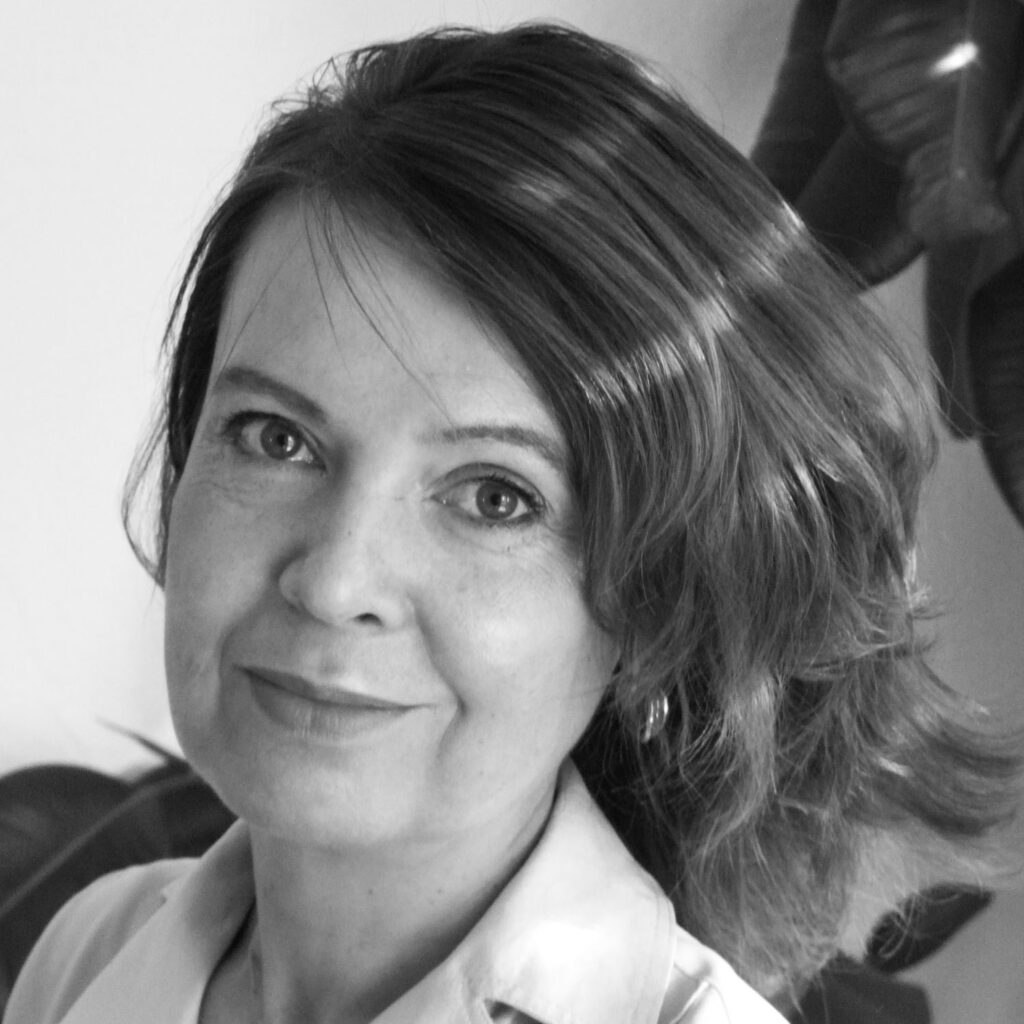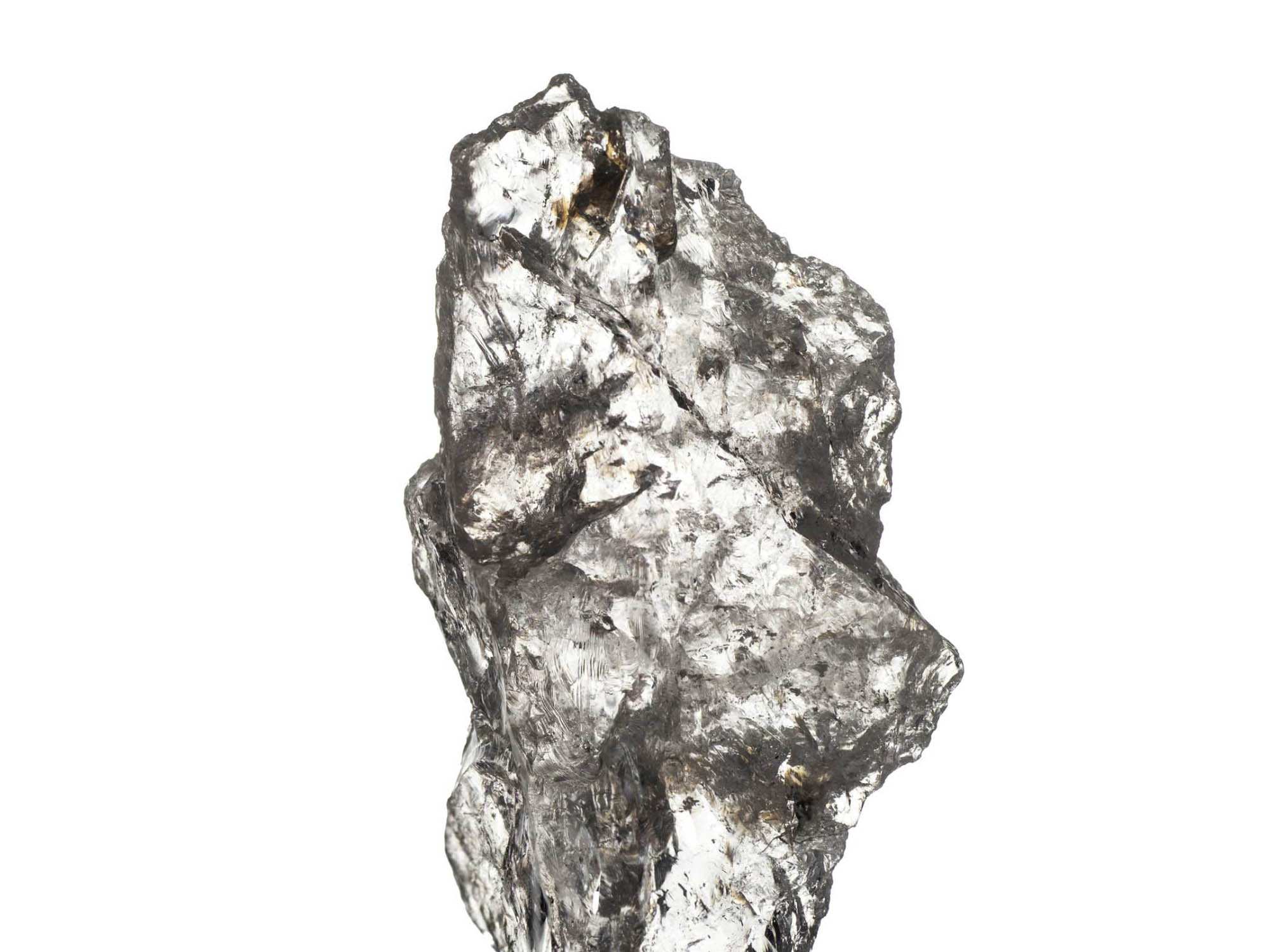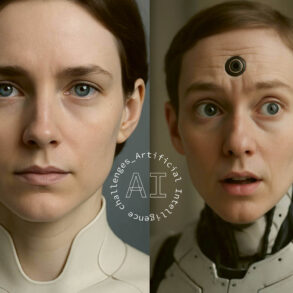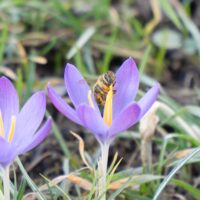Self-education is a recurring theme in Goethe’s work, for example in his Bildungsromane and plays. However, this dimension of inner development is less known in the context of his scientific research. Iris Henningfeld shares her research in this field here and gives an inspiring insight into the connection between self-development and the process of cognition in Goethe’s sense. It is an approach to cognition that encourages rootedness in the earthly world and sensory experience, but at the same time also opens up the spiritual dimension of nature and calls for constant intensification of inner activity.
Goethe deals with the question of the self-education of the human being in an exemplary way. The Faust drama, which Goethe worked on until the end of his life, and the novel Wilhelm Meister’s Apprenticeship (1795/96) can be cited as examples. In both works, the main character sets out on his individual path into the world and develops in terms of spirit and character through manifold confrontations with it. Goethe’s Wilhelm Meister provides the model for numerous subsequent authors who start producing in this genre, including Novalis, Friedrich Schlegel and Gottfried Keller, but also more modern authors such as Hermann Hesse.
What is less well known and recognized is that, not only in his poetic work, but above all in his works of natural philosophy, Goethe deals — partly implicitly, partly explicitly — with the question of the self-education of the human being. For him, exploring nature also means exploring his own spirit. In Goethe’s investigation of nature, the study of nature and the study of the spirit are so intertwined that we might say they form two sides of the same coin. The researcher is confronted in the field of nature with phenomena in such a way that they are compelled to transform and shape themselves through them. What Goethe calls for with regard to ‘type’ in the animal kingdom applies to his view of nature in general: “Now, however, we must persist at and with what is persistent, as well as at the same time with and alongside what is variable, to change our views and learn to be flexible,”1 Goethe writes in an essay on anatomy. The statement contains an archetypal phenomenological principle: the respective approach has to be guided by the nature of the objects and not vice versa, which means using a method to work with phenomena in areas which differ in their nature.
Spirit and Nature are One
Goethe already suspects at the beginning of his preoccupation with nature that the voice of the spiritual in nature can only come to expression in the spirit of the human being. The human being is positioned at the centre of nature, as Goethe understands it, which for him means the ‘ideal’ human: the whole human being with all their senses, soul faculties, and their spiritual forces. Goethe is convinced that all three human capacities are potentially capable of development. “Nature! We are surrounded and embraced by it,”2 it says in emphatic language in an essay, “Nature” from 1782. He continues: “It [nature] has been thinking and ponders constantly; not as a human being but as nature.”3 Two concepts of nature lie hidden in this riddle. In retrospect, however, they can be deciphered from the perspective of Goethe’s later writings on the study of nature: the reference here seems to be to a nature that faces the human being as a sensory being; it is joined by another, a second nature in a sense, which embraces the human being and the first nature. This embracing part possesses reason for Goethe, but he does not refer to this reflecting, thinking being as spirit here, but as nature. Goethe will later, in 1818, with reference to the philosopher Spinoza (1632-1677), also give this spirit-nature or nature-spirit the names ‘God in nature’ or ‘nature in God’.4
From these few quotations it is already evident that the spirit-nature that Goethe experiences and sees is different from the so-called ‘objective nature’ of the conventional, materialistically oriented natural sciences, reduced to measure and number. Thus he does not seek in it the abstract laws that lie ‘behind’ the creation of nature, a ‘natura naturata’, or ‘behind’ its physical appearance: not “animal skeletons and dry bones,”5 as Faust painfully exclaims at his existential low point. Goethe rather wants to explore creative and active nature, a ‘natura naturans’, its living interior and its spirit, which brings about all becoming within it.

What is already alluded to in the early prose hymn of 1782, Goethe systematically spelled out in the following years on the path of his geological, botanical and anatomical research as well as in his colour theory ‘contra Newton’s Opticks’ (1704). Goethe is not an ontological dualist, his concept of nature does not seek the otherness of the human spirit. On the contrary, he rigorously includes the spirit, which is usually set against nature (in the conventional sense) or matter, in his all-encompassing concept of nature. Goethe’s ideas of the ‘archetypal plant’, ‘metamorphosis’ or ‘type’, as well as the ‘archetypal phenomenon’ in his Theory of Colours are among his greatest scientific discoveries. They can be understood as quintessential images or archetypal perceptions of a nature that is illuminated by the human spirit itself; in a complementary way, these ideas are quintessential images of a human spirit that looks at itself in nature. Goethe takes a ‘concrete monistic’ approach to his research into nature. His approach is monistic because the ideas about nature that he develops in his mind are for him at the same time active principles in things themselves. His monism also is concrete because he does not postulate the wholeness of a nature from the ‘top down’, but shows the diversity of phenomena ‘from the bottom up’, ascending from perception to perception.
Sensory and Empirical Immersion
In his essay, “The Experiment as Mediator of Object and Subject” (1792) Goethe also calls the “experiences of the higher kind,” spirit-filled nature.6 This ‘higher experience’ in nature can, under certain conditions, reveal itself to the human being if they train and develop their powers of consciousness on nature. In the “Reflections in the Spirit of the Wanderers” (Wilhelm Meisters Journeyman Years, 1829), Goethe expressly speaks of such an “enhancement of the mental faculty”, which, to be sure, belonged to a “highly educated time.”7 This prospect seemed well-founded to him at the time, for Goethe, in his view, had previously actually penetrated the interior of nature with his discovery of the laws of metamorphosis. Immanuel Kant, on the other hand, who limits human reason ‘a priori’ to its discursivity and can thus be regarded as the philosophical guarantor for the conventional natural sciences to the present day, would have found such an undertaking “inequitable and unreasonable.”8 At this point, readers are warmly recommended to read Goethe’s The Metamorphosis of Plants from 1790.
For Goethe, the human being’s becoming one with the interior of nature does not fulfill an end in itself. Through an ‘[a]malgamation’,9 as he also calls the process of becoming identical with the objects in the spirit, nature itself could be raised to a higher level of being and in this sense become ‘mature’. In the same way, the human spirit can only understand its own being and the human being can only reach their true destiny when they have developed the corresponding organs for this purpose. For Goethe, an excellent way to form these mental abilities, besides artistic creation, is the study of nature.
According to Goethe, neither the ordinary experiences of the physical five senses nor abstract operations of the ordinary scientific mind are sufficient to gain access to a spirit-filled nature. On the contrary, the human being had to develop towards a spiritually seeing consciousness, which possessed so-called “spirit eyes.” They could be used to discern what could not be discerned with the physical senses alone: the non-sensory or super-sensory essence or the idea of a natural phenomenon that manifests itself in the sensory. This, according to Goethe, would require specifically both a completely new quality of perceptual senses and a higher spiritual faculty. On the one hand, the senses and thus perceptions have to keep themselves free of all conceptual prejudices that could corrupt them. Goethe therefore proposes, in analogy to Kant’s Critique of Pure Reason (1781/86), a Critique of the Senses.10 On the other hand, the spirit of the researcher must develop in such a way that it becomes mentally ‘agile’ and spiritually ‘active’ (productive) in a special way when looking at natural phenomena. The difficulty is that this must not happen in an arbitrary way, but in a completely lawful way guided by the phenomena. Goethe proposes immersing oneself in the world of phenomena in a sensory and empirical way, training one’s mental powers on it and finally forming one’s ideas about nature through further intuitive, that is, spiritually observing, activities of consciousness.
Precise Sensory Imagination
In a section of text entitled ‘Genetic Treatment’ from 1798, into which the research on metamorphosis had already been incorporated, Goethe describes the essence of his method. In brief: first, the development of a natural thing, such as a plant, is to be perceived and observed. Starting from the “resulting matter,”11 the individual stages of its development are now precisely recalled in retrospect. In a further step, the researcher actively removes the manifold (memory) conceptions from their consciousness, that is, erases its content. The corresponding inner mental ‘activity’, however, which was connected with observing and remembering a sequence of developmental steps, the ‘impression’ 12 of a matter, as Goethe calls it, is to be maintained in the soul experience.

The procedure described requires an increased effort of consciousness. However, this mental work is indispensable for the potential formation of a new mental organ, a ‘spirit eye’. Goethe is convinced that, with some practice, the researcher can be enabled to do something that seems impossible for the ordinary mind: to look in this way at the successive development of a plant or another living being, which proceeds in time, all at once, as it were, in one moment “as a whole.”13 However, the direct perception of a whole is necessary to understand the essence of an organism and to be able to derive its parts from the whole. Only after almost half a century of practice in natural research (!) will Goethe find a suitable name for his educable and agile method: in an essay of 1824 he coined for this the term “exact sensory imagination.”14 On the path described, the observer can metamorphose themselves in the contemplation of living nature and its constant transformations. However, the researcher’s self-metamorphosis is indispensable for unveiling the mystery of the living.
Cognition is Always Anthropomorphic
Goethe’s method shows another distinctive feature: he is convinced that the corresponding organs of perception and cognition ‘for’ the phenomena must first be developed ‘on’ the phenomena. Thus he noted in Italy: “I must first train my eye to get used to seeing.”15 Goethe wrote to Schiller about the work on his Theory of Colours and confessed that he had “not brought along any organ to deal with the matter,” but that he “always had to train it in and for the experience.”16 Once a new ‘organ’ of comprehension arises on and with the phenomena, the method can ultimately transform the whole person. The latter themselves becomes a new, as it were comprehensive organ of cognition.
Whoever studies Goethe’s research into nature encounters an apparent paradox: on the one hand, Goethe affirms a — in his words also ‘object-related’ 17 — procedure that is guided by observation and based in phenomena in which everything ‘factual’ must in itself already be shown to be ‘theoretical’.18 On the other hand, for Goethe, the human being is at the centre of his research, both as an actor and as a subject and/or ‘object’. An example of this is the chapter on physiological or subjective colours in Goethe’s Theory of Colours. Goethe takes account of the human senses in this section by explicitly considering and scientifically justifying their constitutive contribution to the appearance of phenomena. Not only the seeing of colours, but the essence of cognition in general is for him ‘anthropomorphic’:19 it only happens in the human being and only creates meaning in them. In contrast, it would seem absurd to Goethe to speak of the existence of a nature ‘in itself’ without the human being, which, indeed, would then have to be subsequently reconstructed by the human being in a kind of ‘salto mortale’ and theorised about in terms of physics.
In a diary entry from 1817, Goethe exposes the fatal flaw of physics (and its auxiliary science, mathematics) that manifests itself in this naïve, objectivist view of things. Its “hypotheses and analogies are disguised anthropomorphisms, parables and the like,”20 it says. Physics believed that “it expresses the phenomenon instead of dealing with the conditions under which it appears.”21 The most important conditions, however, under which all phenomena, including the corresponding theories about them, can come to light at all, lie for Goethe in the human being themselves, in their senses and faculties of consciousness.
Conscious Forgetting
But for Goethe, the greatest dangers to cognition lurk in people and their misconceptions and prejudices about things and about themselves. Hence, for him, the path of self-education is always linked to the path of self-knowledge. Goethe considers possible dangers for cognition in almost every one of his scientific or autobiographical works. For him, a first important step in the practice of self-knowledge is to encounter the phenomena in a way that is as unprejudiced and free of presuppositions as possible. This does not mean returning to a (hypothetical) zero point and to the state of consciousness of an (equally hypothetical) ‘tabula rasa’. It means that at every step of research, only that which has been fulfilled in the original perception of things and is connected with an evidential experience should be included in the judgement, but not that which is merely ‘assumed’ by a consciousness and taken to be something. Learning gradually to distinguish between the two is an essential part of the study of nature in Goethe’s sense. To put it simply, it takes the openness in spirit to understand that things always show new facets or turn out to be something completely different from what has been the case so far.
This poses great spiritual and existential challenges. Goethe’s journey to Italy (1786–1788) is exemplary for this approach. His diaries bear witness to how the attentive observer strives to hold back what they — following, as it were, the natural attitude and naïve, unreflective tendency of experience — always already brings with them and to their encounter with things. For Goethe, this includes all sentiments, feelings and conceptions that are not drawn from the original perception of the phenomena themselves. He is explicitly not concerned with remembering what he knows theoretically and with bringing past experiences directly to bear on things, but first of all with forgetting, as it were, the knowledge that has been acquired. For this reason he wanted to examine “how far and whether the creases that have impressed and forced themselves into my mind can be eradicated again.”22
To the extent that Goethe reflects on and practices forgetting as a specific method of withholding judgement, we are dealing with a supposed paradox: a forgetting that does not simply happen but is consciously brought about. Goethe explicitly refers to an active and productive form of forgetting past experiences as ‘unlearning’. Thus he reports on his ‘rebirth’ in Italy and confesses: “[B]ut I did not think that I would have to go so far back to school that I would have to unlearn so much.”23 In the activities of forgetting and unlearning, it is not only those presuppositions that relate to the life of the imagination and the habits of thought of our own life practice that are held back; additionally, not only the doctrines and prejudices inherited from the conventional sciences that are held back. Rather, the natural coloring and the mood of our own ‘soul’, the tendencies of sympathy and antipathy with regard to things, are also to be subjected to cleansing.
A passage from Italy points to this practice of abstaining from our own not yet transformed, not yet cleansed soul inclinations: “I live a very dietary life and keep quiet so that objects do not find an elevated soul, but elevate the soul.”24 To live a dietary life, we might understand Goethe to say, is above all to hold back subjective concerns and self-centred interest in the world and in things. Only this liberated gaze makes it possible for the phenomena to shine forth in their self-given nature.
Strictly Observing Oneself
He addresses further dangers for knowledge in the language of scientific theory in his essay, “The Experiment as Mediator of Object and Subject” (1792). A person is at the mercy of their inner enemies at the moment when they want to interpret their experiences and in scientific practice move from perceptions to judgement. Goethe warns of the moment when, “as if at a pass, all their inner enemies lie in wait — imagination, impatience, hastiness, complacency, stiffness, thought-form, preconceived opinion, comfort, carelessness, changeability, and whatever the whole host with their retinue may be called.”25 For Goethe, possible sources of error lie above all in the researcher’s own personality, their own character.
For Goethe, there is always a moral component inherent in cognition and science. However, the enemies of cognition can potentially be rendered harmless. This requires the constant and critical self-reflection of the naturalist mind. For Goethe, such self-criticism represents the most important activity that must accompany all other experimental practices. He demands of the researcher to always be “their own strictest observer” and “always suspicious of themselves.”26 Studies of nature therefore required them to “struggle through their poor ego,”27 as he comments to his friend Friedrich Heinrich Jacobi in 1794. The purpose of this self-criticism is, among other things, to separate the subjective contribution to how something appears to an observer from what the object brings of itself. To distinguish this was imperative, insofar as science is not only oriented towards a useful explanation, but towards truth.
The Need for a Research Community
Goethe confesses in an aphorism: “If I know my relationship to myself and to the outside world, I call it truth. And so everyone can have their own truth, and yet it is always the same.”28 The saying is open to multiple readings, a possible one being the following: the human being knows themselves by looking at their own being. The person who knows their own being is, we might say, in the middle of their own ‘truth’. The human being can work on their own ideal image, which is oriented towards this truth, and ‘educate and shape’ themselves in this sense. For Goethe, a person’s own ‘truth’ seems to be tied to the individual. It lies beyond the logical categories of ‘right’ and ‘wrong’, but is to be understood in a morally productive and, as Goethe would say, ‘fruitful’ sense.

However, a person’s own ‘truth’ must not be random, not arbitrary. Only the person who knows their spiritual place in the world and is certain of the perspective from which he or she is looking at a more comprehensive truth, forms this own ‘truth’. It then relates to a more comprehensive, holistic truth that would only emerge from the manifold perspectives of a many different people who are ‘focused on one point’ and in this sense ‘educated and shaped’. This kind of community of researchers or, more accurately, of minds, is an ideal for the future. Goethe set a beginning for this goal.
Translation Christian von Arnim
Title image Irina Jacob
Footnotes
- MA 12:127. We quote, with reference to the volume and, where appropriate, the subvolume as well as the page number, from: Johann Wolfgang Goethe, Sämtliche Werke nach Epochen seines Schaffens. Munich Edition (MA), edited by Karl Richter in collaboration with Herbert G Göpfert, Norbert Miller and Gerhard Sauder, Munich 1985 ff.
- MA 2.2:477.
- MA 2.2:477.
- MA 12:100.
- MA 6.1:546.
- MA 4.2:331.
- MA 17:823.
- Immanuel Kant, Kritik der reinen Vernunft. A 277-8/B333-4.90o.
- MA 6.2:821.
- MA 17:805.
- MA 4.2:191.
- Ibid.
- Ibid.
- MA 12:356.
- MA 3.1:65.
- MA 8.1:501.
- MA 12:306 f.
- MA 17:824.
- MA 17:203.
- Johann Wolfgang Goethe, Tagebücher, vol. VI,1 (1817-1818), Munich 2014.
- Johann Wolfgang Goethe, Tagebücher, vol. VI,1 (1817-1818), Munich 2014.
- MA 3.1:39.
- Letter from Goethe to Charlotte von Stein from Italy, 20 December 1786. In: Johann Wolfgang Goethe, Briefe. Kommentare und Register. Hamburg Edition in four volumes. Volume 2:1786–1805. Edited by Karl Robert Mandelkow and Bodo Morawe, Hamburg 2013, p. 33.
- MA 3.1:80.
- MA 4.2:326.
- MA 4.2:323.
- Goethe: Briefe. Volume 2, p. 192.
- MA 17:198.









